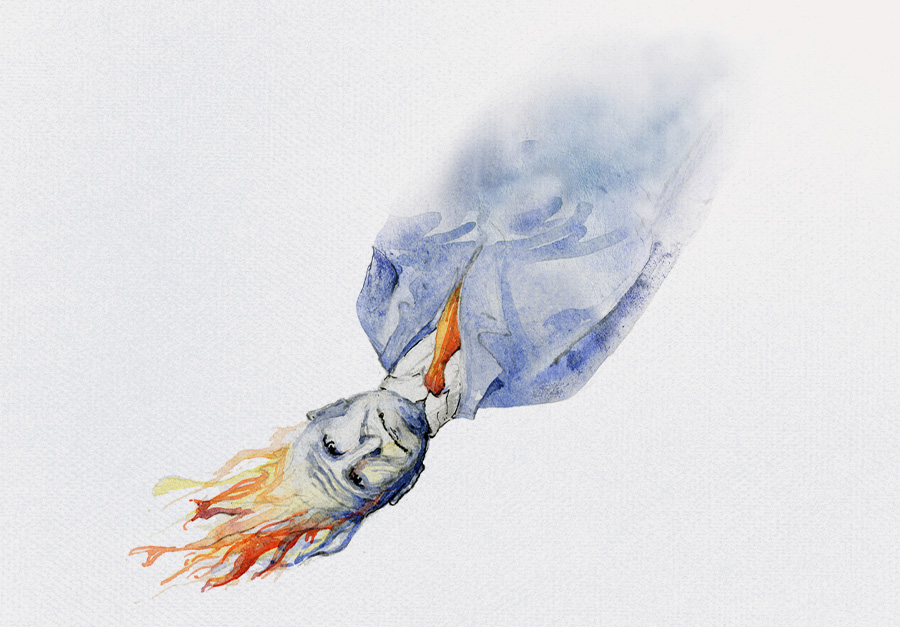Final Mile: The Ghost of Cecil Chubb
This article first appeared in the March 2013 issue of Adventure Cyclist magazine.
Some people claim to be disappointed when they first see it. But on that sunny day, when it appeared as I crested a Wiltshire rise on my bicycle, I got that familiar, childlike, traveler’s dip of excitement in the middle of my stomach. Half a mile away to the northeast, honey yellow in the sun, it looked like a set of giant toy building blocks, left to tumble randomly by a giant child who’d been hastily called away by some better amusement.
A romantic ruin, the main structure was already 2,000 years old at the time of Jesus.
No, Stonehenge didn’t disappoint me.
“It might be a once-in-a-lifetime chance,” I said to my two bicycling companions. A week earlier we had threaded our way south out of London, and by a combination of bike and British Rail, had moved west over the downlands to Salisbury, Wiltshire.
We’d found a B&B a few miles north, in the dark, at Middle Woodford, a tiny village on the Avon River. We were given our own cottage and were settling in when the idea occurred to me.
It had been a year since that sunny day when I’d first seen Stonehenge, and we had planned on going there the next morning.
But to see it at night, I thought, when it’s deserted, that would be the real Stonehenge experience. “It’s only five or six miles north,” I said. Marco looked at me skeptically through his glasses, dabbed his nose with a handkerchief, and sniffed. I turned to Jay. “Marco has a cold, but we can still go,” I said undiplomatically. “Think of it. There’ll be no one around. Maybe we can get inside!” I whispered.
Jay, torn, cautiously agreed, and at about 8:00 PM we got on our bikes and pedaled north along the lane. The stars were out, but a chilled March mist had risen, dipping and fingering its way along the somnambulant Avon. The mist thickened in some places, its milky vapor pouring over us, obscuring the constellations.
We reached the A303 and turned west. The ghostly landscape of Salisbury Plain, dotted with prehistoric tumuli and burial mounds, emptied itself out all around us. Soon, on the left side of the road, an indistinct hulk stood out like some cool, nocturnal mirage, the mist curling around and between the massive sarsen stones.
A passing car’s headlights illuminated the opposite side of the road, and I saw we weren’t alone. I grabbed my brakes, and Jay pulled up next to me. We squinted through the fog at the two figures standing in the military “atease” position across the highway from the monument. They just stood there, facing Stonehenge, now and then some body language revealing that they were in casual conversation.
Because of our headlamps, we knew they had obviously seen us. Deciding we looked suspicious cowering there on the roadside, we pedaled ahead and stopped just short of the two figures, just short of the two . . . policemen.
One appeared to be middle-aged and slightly portly. The other was younger with a medium build. They both wore the classic bobby cap with chinstrap.
Why all this official presence out here in the dark on Salisbury Plain?
“Why, to look after Stonehenge, of course,” the older copper replied. “We get all manner o’ hooligans and nutters tryin’ to get up to the stones — inside ‘em — you know.”
Jay and I, mentally reviewing our now-foiled plan, looked at each other guiltily.
“Some want to carve their initials in the stones,” the policeman went on, “others want to have some sort o’ religious experience in the circle.”
Armed only with nightsticks and torches, both men stood confidently on that ancient hallowed ground, their black-gloved hands still held characteristically behind their backs.
These were classic British coppers.
I was floored that country policemen were actually assigned “Ancient Monument Detail.” I looked at the older cop.
“Ah, well, speaking of experiences, have you ever seen anything out here?” I asked. His eyes flickered toward me and sized me up — somewhat expertly, I thought.
He cleared his throat. “I’ll tell you. I’ve slept out in the middle o’ those stones on several occasions.” He paused — for effect, it seemed. “I’ve even tempted fate and stretched myself out on the Slaughter Stone.”
“Oh, yeah?” My blood raced. I looked across the road at the shadowed megalithic circle, supposed abode of fairy folk and nature spirits. “What happened? What did you see?”
The policeman frowned slightly. “Absolutely nothing. Saw nothing, nothing happened. I slept alright, though,” he said with a chuckle.
Not exactly the bloodcurdling tale I’d been poised for.
“But,” he continued, “there is the ghost.”
This was more like it.
“Yes?”

The cop, hands still behind his back, looked at the ground and kicked a pebble. “That’s right. The ghost of Cecil Chubb. Runs like the devil alongside cars here and peers in at the drivers. Terrorizes motorists, as you can probably imagine. They say he’s got flaming hair or something. Never hurt anybody, though. Just sort of a mischief-maker. But you can bet that plenty o’ nerve-soothing pints have been swallowed in area pubs after encounters with the ghost.”
The younger policeman, who had so far been silently listening to all of this, offered, “I’ve seen him.”
Early in the 20th century, five different Druidic orders practiced their rites at Stonehenge. Sir Edmund Antrobus, owner of the Amesbury estate on which the monument stands, objected to the ceremonies. During the 1901 solstice, Antrobus had the police rout the Druids. He built a fence around Stonehenge and began charging admission. This act went against the tradition of local free access to the downlands.
In 1904, there was another confrontation. Antrobus interfered while the Druids were burying the ashes of a former Arch Druid within the stone circle.
Antrobus later had a notice posted within Stonehenge prohibiting religious services in the circle. Paying no heed, the Druids returned to celebrate the 1914 summer solstice and were thrown out by the Wiltshire Constabulary (predecessors of our two roadside cops). The Druids ceremoniously cursed Antrobus, and within a year, both he and his son were dead.
Cecil Chubb entered Stonehenge lore when the Amesbury estate went up for sale on September 21, 1915, soon after Antrobus and his son had died. The estate was auctioned at the New Theatre in Salisbury with Stonehenge as Lot 15.
The bids stuck at £6,000 for a while, but were finalized with local landowner Mr. Chubb’s offer of £6,600. Chubb allegedly had no special interest in the “Stone Grail.” He just thought a local man should be the owner — it was an impulse purchase.
Chubb seemed a more fair-minded proprietor. He halved the admission charge and cooperated with the Druids in their religious practices at the stone circle. But Chubb didn’t keep Stonehenge for long. In 1918, he donated it to the government. In return, he was knighted, and Sir Cecil earned the local nickname Viscount Chubb of Stonehenge.
“You’ve seen him … the ghost?” I asked the younger cop.
“That’s right. I’d come out o’ the loo one night in the car park,” he began, gesturing to the parking area behind him. “Now, you see, there’s a tunnel that goes under the road from the car park to Stonehenge. Well, as I said, I’d just come out o’ the loo, when I see this figure darting round the car park, hair aflame, and he’s taunting me, like. So I take off after him — that’s my job, after all — and he runs into the tunnel.” The policeman pointed. “I was right behind him — very close — and I ran the length of that tunnel, but he didn’t come out the other side. He just … poof!” The cop fluttered his gloved fingers in an abracadabra gesture in front of his face. Taking his gesture as a hint, we decided to take our leave.
Cycling back south, looking over our shoulders uneasily into the Wiltshire brume and watching for the flaming, road-running ghost, Jay and I realized there was something we hadn’t asked the night watchmen: Had the ghost of Cecil Chubb ever haunted bicyclists?
One thing we did know, we had entered the realm of Celtic-English downland folklore that night and had come away with something unique — a real Stonehenge experience.


